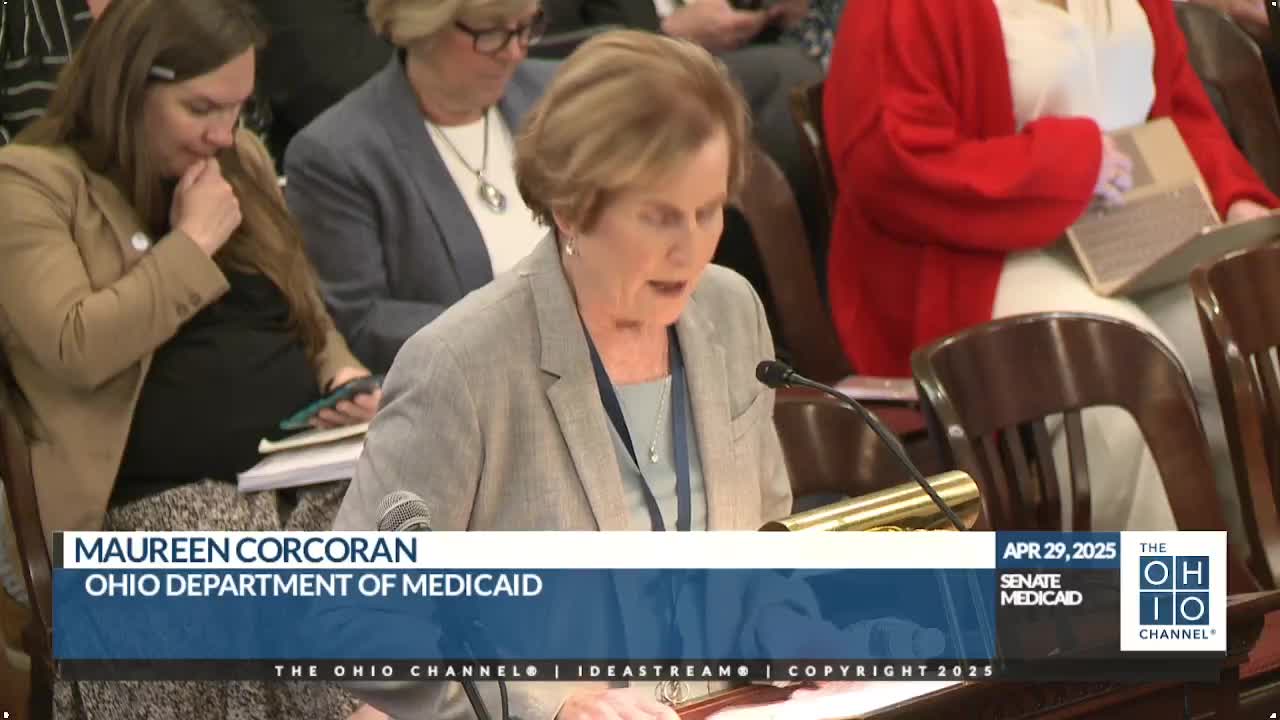Ohio budget outlines rising healthcare costs driven by aging population and drug prices
April 29, 2025 | Medicaid, Senate, Committees, Legislative, Ohio
This article was created by AI summarizing key points discussed. AI makes mistakes, so for full details and context, please refer to the video of the full meeting. Please report any errors so we can fix them. Report an error »

Ohio's Medicaid Committee convened on April 29, 2025, to discuss critical budgetary impacts and strategies for managing rising healthcare costs. A key focus of the meeting was the interplay between caseload growth and per member per month (PMPM) costs, which are expected to significantly influence the state's Medicaid budget in the coming years.
The committee highlighted the introduction of new policies aimed at addressing these financial challenges, particularly in light of federal mandates that dictate certain costs, such as those associated with Medicare Part D. The discussions underscored the importance of understanding how these costs are intertwined with the overall budget, especially as Ohio anticipates a substantial increase in expenditures due to an aging population.
A notable point raised was the impact of one-time federal funding from the American Rescue Plan Act (ARPA), which has provided Ohio with approximately $5.1 billion in enhanced federal funds. This funding is being utilized to offset general revenue, helping to stabilize the budget despite ongoing increases in healthcare costs.
The committee also examined demographic trends affecting Medicaid, particularly the growing number of elderly residents and the corresponding rise in costs associated with dual-eligible and disabled individuals. These groups are projected to account for a significant portion of the overall cost growth, with estimates suggesting they will represent about 40% of the total increase in PMPM costs for fiscal year 2026.
Additionally, the rising costs of prescription drugs were a major concern, with specific attention given to high-cost treatments and the increasing utilization of obesity and weight loss medications. The committee noted that drug costs are contributing to a 6.2% increase in PMPM expenses, further straining the Medicaid budget.
As Ohio navigates these complex challenges, the committee's discussions reflect a proactive approach to managing Medicaid expenditures while ensuring that vulnerable populations continue to receive necessary healthcare services. The implications of these decisions will be closely monitored as the state prepares for the upcoming fiscal years.
The committee highlighted the introduction of new policies aimed at addressing these financial challenges, particularly in light of federal mandates that dictate certain costs, such as those associated with Medicare Part D. The discussions underscored the importance of understanding how these costs are intertwined with the overall budget, especially as Ohio anticipates a substantial increase in expenditures due to an aging population.
A notable point raised was the impact of one-time federal funding from the American Rescue Plan Act (ARPA), which has provided Ohio with approximately $5.1 billion in enhanced federal funds. This funding is being utilized to offset general revenue, helping to stabilize the budget despite ongoing increases in healthcare costs.
The committee also examined demographic trends affecting Medicaid, particularly the growing number of elderly residents and the corresponding rise in costs associated with dual-eligible and disabled individuals. These groups are projected to account for a significant portion of the overall cost growth, with estimates suggesting they will represent about 40% of the total increase in PMPM costs for fiscal year 2026.
Additionally, the rising costs of prescription drugs were a major concern, with specific attention given to high-cost treatments and the increasing utilization of obesity and weight loss medications. The committee noted that drug costs are contributing to a 6.2% increase in PMPM expenses, further straining the Medicaid budget.
As Ohio navigates these complex challenges, the committee's discussions reflect a proactive approach to managing Medicaid expenditures while ensuring that vulnerable populations continue to receive necessary healthcare services. The implications of these decisions will be closely monitored as the state prepares for the upcoming fiscal years.
View full meeting
This article is based on a recent meeting—watch the full video and explore the complete transcript for deeper insights into the discussion.
View full meeting
